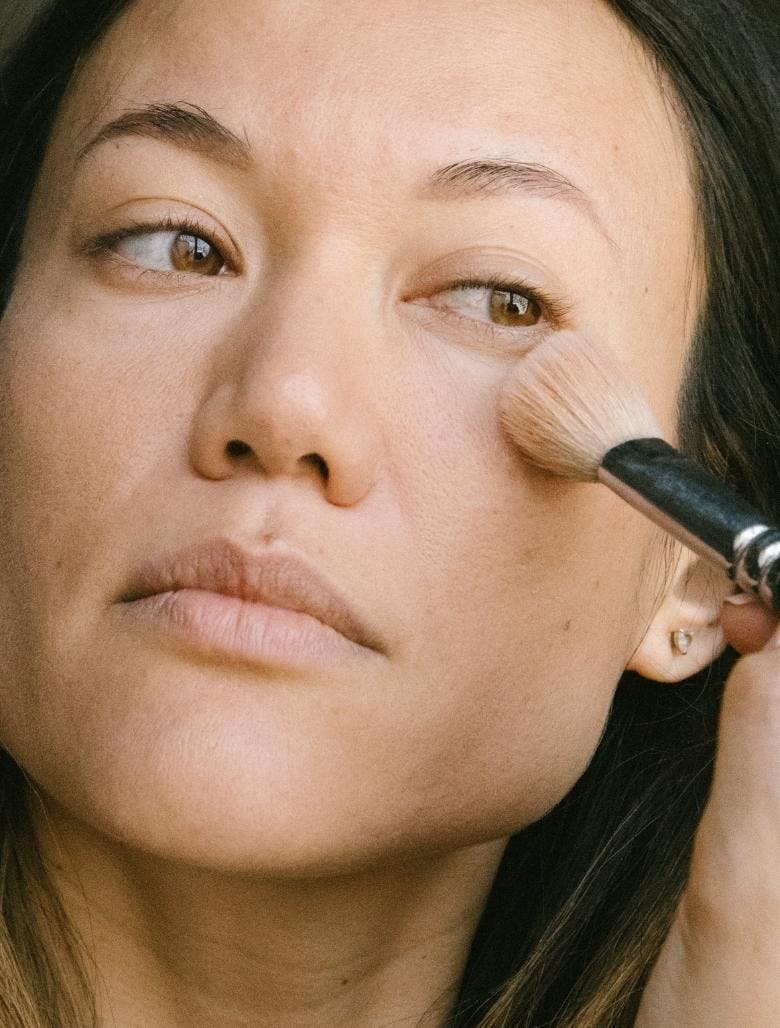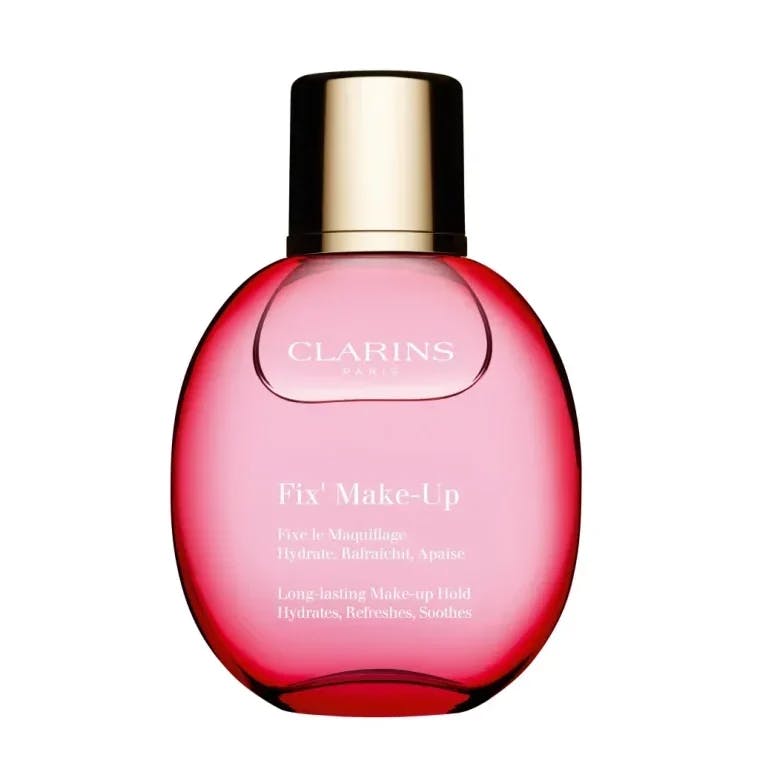How To Apply Foundation Like A Pro
8 minutes read
Before you learn how to apply foundation correctly, it’s essential to understand what foundation is meant to do. Remember that its primary function is to even out the skin tone and create a sense of uniformity between the face, neck and body. In addition, it can alter the finish of your skin, as with the help of foundation, you can make it luminous, velvety or matte.
Getting your foundation to look good isn’t rocket science by any means. But to nail your application, there are a handful of factors to consider and things to remember. Beauty Daily breaks them down.

Choosing the right formula
Pick the texture that works for you
“When it comes to foundation, you need to consider so many different variables,” says Jason Roberts, Clarins Commercial Training Manager. Your skin type, coverage and finish preference are the main factors. There are so many foundation textures you can choose from: liquids, creams, powders and cushions, to name a few.
Powders work best for people with oily skin types looking for shine control. If your skin is dry, avoid them. Liquids tend to work well for most skin types. It’s just a matter of which one you choose.
There are many foundation types and so when doing your research, check to see if the foundation offers the level of coverage you need (low, medium or high) as well as the finish you’re after (radiant, matte, etc). If you’re unsure, your best bet is to pick something that sits in the middle. For example, Roberts recommends the Everlasting Youth Fluid, £38, for beginners. “It’s medium coverage and has a satin finish – so it sits well in between.”
Choosing the right shade
When choosing a foundation shade, try to get it to match an area of your face that doesn’t have any redness or hyperpigmentation. Typically, the jawline or the area behind the jaw (close to your ear) is the perfect spot for most people.
Test your foundation in natural light before you buy it. Also, when you test it, let it settle for some time before deciding if it’s the right one for you. Some foundations can change colour when they react to the chemistry of your skin.
Remember to reassess your foundation shade with seasonal changes. You may also have to choose a different formulation if your skin gets drastically oilier in the summer and drier during winter.
The pre-foundation prep work
“Prepping the canvas is a fundamental step in foundation application,” says Roberts. Foundation isn’t going to replace your skincare, no matter how many skincare benefits it may offer. What you prep your skin with depends on two factors: your skin type and finish preference. That’s because how you prep your skin influences the foundation’s longevity and finish.
“Following a good basic skincare routine (cleansing, exfoliating, toning and moisturising) will ensure the foundation looks its best,” Roberts points out. Also, hydrated skin is a must. “If it’s not adequately hydrated, your skin may just end up drinking the foundation up.” Plus, you’ll notice that products don’t glide on the skin smoothly and look patchy.
He recommends Double Serum, £108, for hydration. Then, you can reach for a primer that suits your needs. Try the SOS Primers: Green is great if you want to cancel redness, Coral works to correct pigmentation and Universal Light is great if you want a radiant finish.
If you want to blur fine lines, wrinkles and pores, try the Instant Smooth Perfecting Touch, £30 – Roberts calls it “photoshop in a jar.”
Choose a tool
There are so many options to choose from, and no right or wrong ones. Different tools create different effects. And they also cater to different foundation formulations.
Round brush: Want to know how to apply foundation with a brush? A round brush like the Multi-Use Foundation Brush, £26, is ideal if you like a natural finish. You can use it with creams, liquids and even powder formulations. When applying the foundation, use small circular motions to blend the product into the skin.
How to apply foundation with fingers: Applying foundation with your fingers is perfect if you want minimal, even coverage. “All Clarins foundations can be applied using fingers,” says Roberts. “Some of the top make-up artists like to apply their foundation using fingers. It’s about personal preference.”
You can apply and blend using the warmth of your fingertips, just like you would a face cream. Patting and dabbing motions will help you build coverage in specific areas.
Flat brush: If you like a little more coverage, reach for a medium-sized flat brush with a rounded cat’s tongue tip. With this, you can paint on your foundation like you were painting a picture. It helps you build the coverage to your desired level.
Try: The classic Foundation Brush, £26.

How to apply foundation with a sponge: You could also use a make-up sponge to apply foundation. They are a good pick if you’re not comfortable using brushes. Avoid dragging the sponge on your face to blend. Instead, use gentle tapping motions to stipple the products across the face.
Whatever brush or application tool you choose – you must keep them clean and free of old make-up and bacteria.
How long should you wait to apply foundation after moisturiser?
After applying moisturizer, it’s generally recommended to wait about 1 to 2 minutes before applying foundation. This allows the moisturizer to absorb into the skin, creating a smooth base for the foundation application. The wait time can vary depending on the specific moisturizer used, so it’s essential to observe how your skin feels before proceeding with the next step in your makeup routine.
How long should you wait after primer to apply foundation?
After applying primer, it’s advisable to wait for about 1 to 2 minutes before applying foundation. This brief waiting period allows the primer to set and create a smooth, even base for the foundation. However, the wait time can depend on the specific primer and its formulation. Always follow the instructions on the product and pay attention to how your skin feels before moving on to the next step in your makeup routine.
How to apply foundation flawlessly
Start in the centre
Begin applying the foundation in the middle section of the face: around the nose, chin and centre of the forehead. This is where most people have redness or unevenness in their skin tone. Next, blend outwards and thin out the coverage towards the periphery of the face.
Another reason why this works? “We’ve all got tiny hairs on our cheeks and blending from the centre out and then down doesn’t go against the direction of hair growth,” says Roberts. This means a smoother, more even look.
Apply it where you need it
For people looking for lighter coverage, remember that you don’t have to apply foundation all over the face if you don’t need it. Instead, apply sparingly only on the areas where you may have unevenness and let the rest of your skin remain foundation-free. When natural skin shows, it makes the make-up appear a lot more natural.
Work in thin layers
It may be quicker to apply one thick layer and dash out the door, but it never looks natural. Plus, it will crease and slide around the face in no time. So instead, sandwich one thin layer over another. This takes some patience, but the results are worth it.
Building coverage gradually gives you more control, so you apply only as much as you need. Of course, you always have concealer to cover any darker scars and spots.
Blend, blend, blend
When you think you’ve blended enough, blend some more. This is vital to guarantee a seamless application. Blend along the periphery of the face and down the neck. You could also skim your face with a clean foundation brush, in the end, to take off any excess product.
Set it
When you’re done, use a powder to set the foundation. This will keep creasing and excess shine at bay – especially important if you have oily skin.
Not a fan of powders? You could also use a setting spray. The Fix’ Make-Up spray, £24, sets your foundation and leaves you with a dewy, fresh finish.

How to apply powder foundation
Prefer a powder formula?
- Start with a clean, moisturised face and choose a powder foundation matching your skin tone.
- Using a fluffy brush, tap off any excess powder. Begin at the centre of your face, buffing in circular motions.
- Work outward for even coverage, paying attention to areas needing more attention. Layer for additional coverage as needed.
- Blend well along your jawline and hairline to avoid tide lines.
- Use a smaller brush for precise application around the eyes and nose.
- For a seamless finish, set your makeup with a translucent powder or setting spray.
How to apply foundation to mature skin
There is a slightly different are to applying foundation to mature skin. Here are our top tips:
- Start with a hydrating primer for a smooth base.
- Choose a lightweight, dewy foundation that won’t settle into fine lines.
- Use a make-up sponge for an even application, focusing on areas needing coverage.
- Set with a translucent powder sparingly, and finish with a hydrating setting spray for a youthful, radiant finish.
Next read: How To Choose A Foundation Shade Online
Sign up for our newsletter
We will keep you in the loop for special offers, exclusive gifts and product news.

